By Tom Wintaugh | November 13, 2023

See why top ecommerce brands use Miva’s no-code platform to run
multiple stores, manage massive catalogs, and grow their revenue.
Reducing abandoned carts is a key concern for all ecommerce sellers. Among the various techniques which can be used to re-ignite lost conversions, the abandoned cart email is still very popular and effective. Seller surveys indicate frequently outstanding results, with abandoned cart emails logging as high as a 40% open rates, 50% click-thru rates, and 10% going on to make a purchase. Mastering the messaging of these emails can be a huge help in recapturing potential lost sales—in this blog, we’ll show you where to focus.
Before composing the email's content, it's essential to grasp why customers often abandon their carts, as this will inform the best angle for your approach. The reasons shoppers abandon carts vary from surprise fees to simply getting distracted. Identifying these motives provides a solid starting point for your email copy. Common reasons include:
Grasping the 'why' tailors your approach to directly address and resolve these concerns. Each of the above examples is a different “problem” that you need to specifically solve with the content of your email.
Perhaps the most important copy in your entire abandoned cart email will be the subject line. This line needs to convey, at a glance, an intriguing subject, a sense of urgency, and a strong benefit the recipient will enjoy if they open your email.

A great product image can do most of the heavy lifting for you. High-quality images of products left behind in the cart can reawaken your customer’s initial interest. You can find examples of good abandoned cart email imagery here. Next, the email layout itself should be clean and concise, focusing on the abandoned cart item, and not bringing in other subjects or promotions which add visual clutter.
Now that you have your customer's attention, describe in a few sentences maximum:
Tonally, try to be persuasive without appearing desperate. For instance, opt for phrases like "We noticed you left something" rather than "You forgot to check out." A quick reminder of benefits, be it product attributes, swift shipping, or an easy return policy, can further tip the scale in your favor.
Sometimes, the right incentive can motivate a customer to return to your site. Different customers will value different types of rewards, so consider the qualities of the product and customer profile when devising incentives. Here are some common examples:
In this way, providing genuine value transforms the purchase completion into an opportunity for your customer.
Your email's culmination is the CTA. It should use simple, clear language in the form of a command. Let the customer know exactly what to do next, usually in the form of a button or a link.
It’s a great practice to shape CTAs around a simple action command and statement of what will happen when a user performs it. The classic “Buy Now” is an evergreen for a reason—it is a strong, simple command with a strong sense of urgency. Other excellent CTAs include “Get it now”, “Download here” etc. You might try a few words which creatively connect to the idea of the abandoned cart, such as “See What You’re Missing." You can find more CTAs and other conversion drivers here.
While guiding customers back to the sale is the primary goal, gleaning insights into why they abandoned their cart is invaluable. A short survey asking "Why did you abandon your cart?," perhaps with multiple-choice answers, allows for quick feedback, helping refine your overall shopping strategy and experience. Engaging the customer in this way is also a clever sales technique—getting them talking about the product and interacting with your brand brings them closer to purchasing again.
Through understanding what motivated the purchase/abandonment, sending simple reminders, and adding genuine value offerings, these emails can significantly boost your conversion rates. It's not just about recovering a lost sale, but enhancing the overall shopping experience for your customers—a strategy that will help those abandoned carts transition smoothly to sales.

Katy Ellquist, Miva’s Digital Marketing Strategist, is an accomplished writer, marketer, and social media analyst who has created sophisticated content campaigns for a broad range of professional clients. She brings to Miva a complex understanding of ecommerce trends and techniques, building upon extensive digital agency experience and a prior role as direct liaison to Miva’s top accounts. Katy is a regular contributor to the Miva blog, covering essential ecommerce topics like design & development strategy, site optimization, and omnichannel selling, with the goal of increasing the actionable knowledgebase of the entire Miva community.
Love it? Share it!
No worries, download the PDF version now and enjoy your reading later...
Download PDF